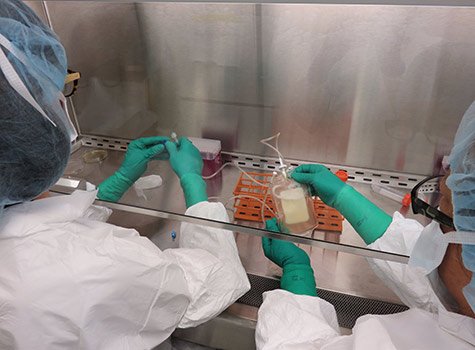«Most robots use two fingers and to pick things up they have to squeeze," said Jaeyoun (Jay) Kim, an Iowa State University associate professor of electrical and computer engineering and an associate of the
And that makes them perfect hands and fingers for small robots designed to safely handle delicate objects.
The spiraling microrobotic tentacles are described in a research paper recently published in the journal Scientific Reports. Kim is the lead author.
The paper describes how the engineers fabricated microtubes just 8 millimeters long and less than a hundredth of an inch wide. They’re made from PDMS, a transparent elastomer that can be a liquid or a soft, rubbery solid. Kim, whose research focus is
The paper also describes how the researchers sealed one end of the tube and pumped air in and out. The air pressure and the microtube’s asymmetrical wall thickness created a circular bend. They further describe how they added a small lump of PDMS to the base of the tube to amplify the bend and create a
And that’s just what the engineers wanted:
«Spiraling tentacles are widely utilized in nature for grabbing and squeezing objects," the engineers wrote in the paper. «There have been continuous
It took a lot of problem solving to create the extra turn in the microrobotic tentacles. «Yes, we scratched our heads a lot," Kim said.
The engineers had to develop new production techniques to create the microtubes. They had to figure out how to peel the microtubes off a production template. And they had to use computer modeling to find a way to create more coiling.
Kim said the resulting microrobotic tentacle is «
The current study was supported by Kim’s
Kim said the project is a nice combination of two new trends in robotics:
«There’s microrobotics, where people want to make robots smaller and smaller. And there’s soft robotics, where people don’t want to make robots out of iron and steel. This project is an overlap of both of those fields. I want to pioneer new work in the field with both microscale and soft robotics.»
— See more at: http://www.news.iastate.edu/news/2015/06/19/
